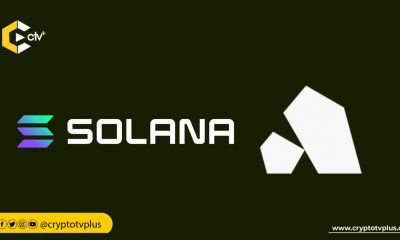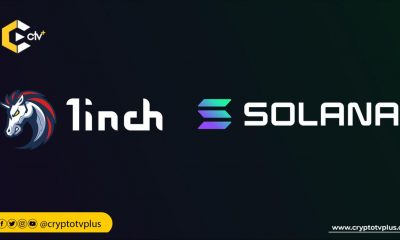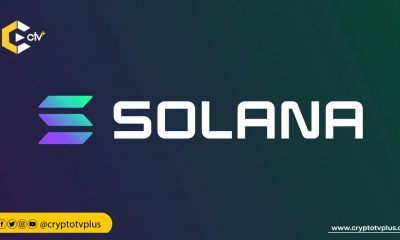FEATURED
The validator debate: how many are needed for true blockchain decentralization?

As blockchain technology continue to advance, the role of validators becomes increasingly important in protecting network security and maintaining integrity. With Ethereum boasting over 1.6 million validators, Solana surpassing 1,000, the TON blockchain having 384 active validators, and TRON consistently maintaining 27, the question arises: what is the optimal number of validators needed to ensure true decentralization in a blockchain network? This question was the focus of a debate session at Solana’s 2024 Breakpoint event.
Brian Long, cofounder of Triton One, stated that the future of Solana will likely have only 100 validators. These validators will be financially stable and capable of investing in advanced technology to meet the network’s growing demands. As a result, the network’s performance will improve, leading to faster transactions, reduced congestion, and a smoother user experience.
In the future, these validators will also expand into regions with fewer validators, such as the southern hemisphere, to make the network more globally distributed.
Anatoly Yakovenko, co-founder of Solana and CEO of Solana Labss, holds a different view. He compares the expansion of the internet, which relies on real hardware like cables, routers, and servers, to Solana’s need for economic security. Yakovenko argues that Solana must have a large number of validators—computers that help run the network—distributed globally.
The more validators, the better the system functions, making it easier to identify and resolve problems. Validators are crucial for keeping the network online and ensuring blocks are produced every 400 milliseconds. A greater number of validators means more scrutiny from various parts of the world, enhancing reliability and security.
Yakovenko believes that as crypto expands and businesses increasingly adopt it, these businesses will invest in the required hardware, much like they do for internet infrastructure today. As long as Solana offers a strong product and maintains user engagement, the network will grow and become more secure.
Decentralization and cost of running validation nodes
The session host, Dan Albert, Executive Director of the Solana Foundation, raised a question about the balance between decentralization and the economics of running a validator on the Solana network. He asks Brian to explain how Solana can maintain a decentralized network if the costs of running a validator are so high that it might make the network more centralized.
The session host, Dan Albert, Executive Director of the Solana Foundation, raised a question about the balance between decentralization and the economics of running a validator on the Solana network asking Brian to address how Solana can maintain decentralization if the costs of running a validator are so high that they might centralize the network.
According to Brian, the biggest expense for validators is voting costs, not hardware. Voting refers to the process by which validators participate in confirming transactions on the network.
He noted that even validators with low “stake” (the amount of Solana tokens they manage) struggle to cover monthly voting costs, which range from 20 to 30 Solana. This financial strain makes it difficult for smaller validators to stay operational, raising concerns about decentralization.
Decentralization and security; Too much validators can be risky
The Co-founder of Solana highlighted a significant challenge in balancing decentralization and security. He pointed out that lowering the financial barrier to running a validator could allow dishonest participants to create numerous validators.
This situation could lead to a network partition, enabling double-spend attacks. Such attacks would erode trust in the network, as no global financial institution would rely on a system where double spends occur, even without direct financial loss. The resulting confusion and operational issues would severely disrupt services.
Reflecting on security, he noted that having numerous validators is crucial, but without proper safeguards, it can leave the system vulnerable to exploitation by bad actors.
He suggested that financial institutions, such as Circle, might opt to manage their own infrastructure of 100 nodes globally. This approach would allow them to quickly identify any potential partitions and swiftly pause operations to prevent damage.
Explore further: Is cryptocurrency just a roll of the dice, or does it hold deeper value?
He mentioned that major institutions like Bank of America, if they were to adopt Solana, would likely operate their own nodes to safeguard their assets. This setup would enable them to continuously monitor the network and prevent partitions, ensuring secure operations.
100 validators, 1,000 validators, and regulatory concerns
In response to Albert’s question about whether having only 100 staked block-producing validators would suffice for maintaining Solana’s decentralization, Brian noted that while better performance and fast transaction times may seem appealing, fewer validators can make the network fragile.
He pointed out that a smaller group of validators, especially those with significant wealth and stake, become prime targets for bad actors, including hackers and corrupt entities. It is easier to attack or corrupt a set of 100 validators than a larger network with thousands of smaller validators, which could be more resilient and decentralized.
Brian also raised concerns about regulatory risks, emphasizing the importance of having validators spread across many jurisdictions. Such broad distribution would protect the network from sudden government actions or policy changes in any particular region.
Albert followed up asking how much more challenging it is to partition a network with a thousand validators compared to just 100. Anatoly defended the 100-validator scenario, arguing that even partitioning a network like Solana’s, with about 100 geographically distributed nodes, would be extremely difficult.
He noted that this level of coordination would need the involvement of major organizations such as AT&T, making it very difficult to execute. He emphasized that double-spend attacks are extremely unlikely in such networks.
Lastly, the Solana Chief mentioned that networks like EOS, with as few as 20 validators, have never experienced a double-spend attack. He suggested that achieving true global coverage might require between 500 and 1,500 validators.























Pingback: EOS Crypto: The Blockchain Revolution Explained